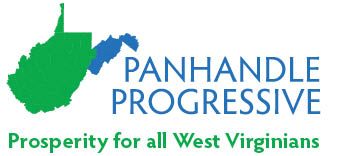I recognize that some of my readers may be Trump supporters who would prefer not to see a Biden administration. And, of course, one should not count one’s chickens too early. That said, there can be little debate that the Trump administration has been more hostile to sound environmental policy than any administration in modern history. From the start President Trump identified environmental protection as the territory of Obama liberals and played strongly to his populist base and big fossil fuel industry donors by dismantling every protection in sight. So, a Biden administration has a lot of work to do restoring the positive direction set in previous administrations. Here is where I think he should start.
Rejoin the Paris Accords
Almost every nation in the world, including the United States, signed the Paris Accords in 2015. The central aim of the Accords is to coordinate a global response to climate change by keeping a global temperature rise this century well below 2 degrees Celsius and to find the means to limit the temperature increase even further to 1.5 degrees Celsius.
But Trump is a climate change denier, and his fossil fuel backers have a financial stake in things remaining as they are. On November 4, 2019, the Trump administration began the official process of withdrawing the United States from the Paris Accords, which will not be completed until the day after the November 2020 election. Upon withdrawal, the U.S. will no longer be committed to reach its emissions reduction targets under the Accords.
Why does this matter? First, the United States is one of the two largest emitters of greenhouse gasses in the world so relaxing our efforts to reduce these emissions will have a hugely negative effect on the world’s ability to reach the Paris goals. Second, the United States is an environmental policy and technology leader in world. Our absence from the Accords takes our gravitas and leadership out of the equation. It weakens our international soft power and opens the door to preening by the Chinese.
How could a Biden administration reverse Trump’s withdrawal? The Paris Accords are a non-binding expression of national commitment. President Obama was able to enter the United States into the agreement through executive action, since it imposed no new legal obligations on the country. Candidate Biden has pledged to recommit the country to the Paris Accords, and can do so most likely through similar executive action. Legislation is also possible. Experts believe that the United States could rejoin the Accords in a matter of a few months. It is inconceivable that other nations would oppose our rejoining.
Appoint Environmentalists to Head Environmental Agencies
What a concept. But President Trump’s first appointment to head the EPA was Scott Pruitt, a notorious climate change skeptic. As Oklahoma’s Attorney General, Pruitt sued the EPA 14 times. Pruitt’s replacement, Andrew Wheeler, is a former coal industry lobbyist who has proposed dubious rules limiting the kind of scientific information the EPA can consider. One that called on the EPA to consider only “double blind” studies of the sort used in drug trials was called “breathtakingly ignorant” by the Union of Concerned Scientists. The Biden administration should be able to improve upon the quality of the EPA Administrator in short order.
The Department of the Interior sets policy and manages the implementation of many environmental statutes through a group of key agencies, including the Fish and Wildlife Service, the Forest Service, the Bureau of Land Management, the National Park Service, and others. Having a Secretary with environmental sensitivity and purpose could make a huge difference.
President Trump has seemed mainly interested in using the Department of Interior as a conduit to reward his friends in the extractive industries by shrinking protected land and opening federal lands to resource exploitation. Trump’s first appointment to Interior, Ryan Zinke, has been called “the most anti-conservation Interior secretary in our nation’s history.” President Biden’s appointment of a Secretary of Interior will be significant and closely watched.
Revive Obama’s Executive Order Requiring All Federal Agencies to Enhance Climate Preparedness and Resilience
In 2013, President Obama issued Executive Order 13653 instructing all federal agencies to identify global warming’s probable impact on their operations and take the actions necessary to protect against that impact. The importance of this is obvious. In 2016 alone the United States suffered 15 extreme weather and climate-related disasters each exceeding $1 billion in losses. Moreover, the Pentagon has for years regarded global warming as a significant threat to American national security.
But in March 2017, shortly after taking office, President Trump rescinded Obama’s Executive Order. In this order, Trump clearly set out the reason for this rescission:
It is the policy of the United States that executive departments and agencies immediately review existing regulations that potentially burden the development or use of domestically produced energy resources [oil, natural gas, coal, and nuclear energy resources] and appropriately suspend, revise, or rescind those that unduly burden the development of domestic energy resources beyond the degree necessary to protect the public interest or otherwise comply with the law. “Burden” means to unnecessarily obstruct, delay, curtail, or otherwise impose significant costs on the siting, permitting, production, utilization, transmission, or delivery of energy resources.
It is not immediately obvious why unburdening the production of domestic energy required the rescission of Obama’s direction to plan for climate disasters, but there you have it. President Biden should immediately rescind this absurd Order and restore good sense to the nation’s efforts to protect itself against the effects of global warming.
Establish Science, Not Politics, As the Guiding Principle of Environmental Policy
President Trump has politicized agencies that are only effective and credible when they rely on the best science. This has happened since the beginning of the Trump administration. For example, he has marginalized the EPA’s Science Advisory Board by prohibiting any member but the Chairman from reviewing decisions regarding agency regulations. His 2021 budget proposes eliminating funding for that agency’s Climate Change Research Program. Pursuant to a direction from a Trump executive order EPA terminated the National Advisory Council on Environmental Policy and Technology. The BLM issued a final environmental impact statement for drilling in the Arctic National Wildlife Refuge and concluded there was no climate crisis.
The list of anti-science policies and actions during the Trump administration is quite long. These have been catalogued by Columbia University Law School’s “Silencing Science Tracker.” Within the first ninety days of a Biden administration, he could issue an executive order directing federal agencies to act only after giving heightened consideration to the best data and scientific opinion available, and he could restore to a prominent role the various science advisory bodies Trump has marginalized or dismantled.
Reversing Anti-Environment Regulations
President Biden will be unable in the first ninety days to reverse many of the harmful regulatory rollbacks and changes wrought by the Trump administration. All of these have been listed by the Harvard Law School’s Regulatory Rollback Tracker. This is because any such action must proceed deliberately and be based on a reasonable assessment of all factors, usually involving public testimony or input. He will not simply be able to change a regulation because he believes it is the ill-conceived product of the previous administration. Trump learned this lesson the hard way, most recently in connection with reversing Obama’s DACA order deferring deportation of children brought here illegally.
But President Biden can direct that these be triaged and that the process for reversing the most significant of them be started. The list is long and tantalizing. It includes Obama’s Clean Power Plan setting standards for power plant emissions, which the Trump administration repealed. The Clean Power Plan was a primary means to reach the nation’s Paris Accords emissions commitment.
There may be other, more important steps President Biden could take immediately to restore the correct course on the environment. The plate will certainly be full. One thing is certain — January 2021 cannot come soon enough for the environment.

